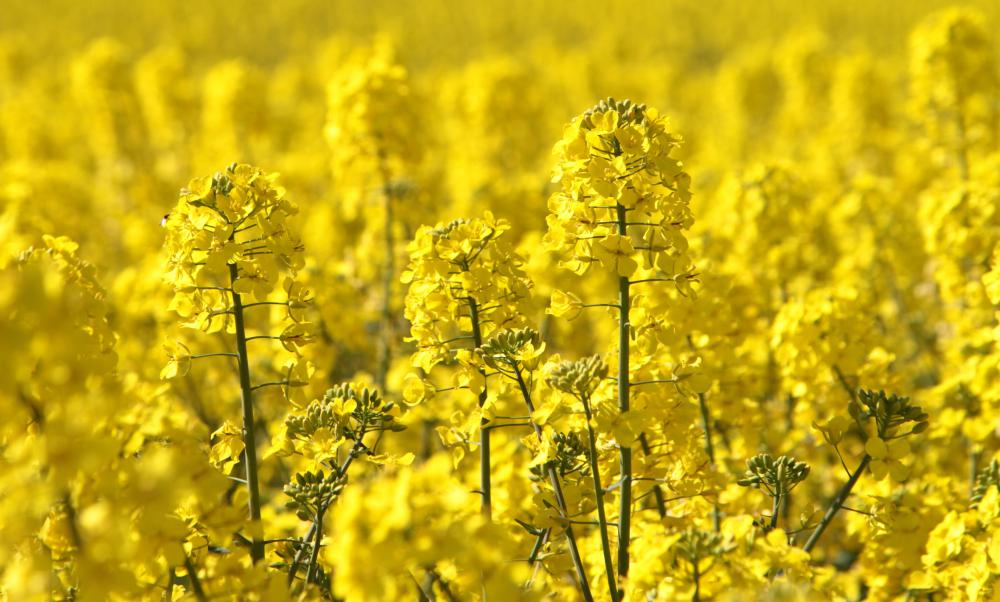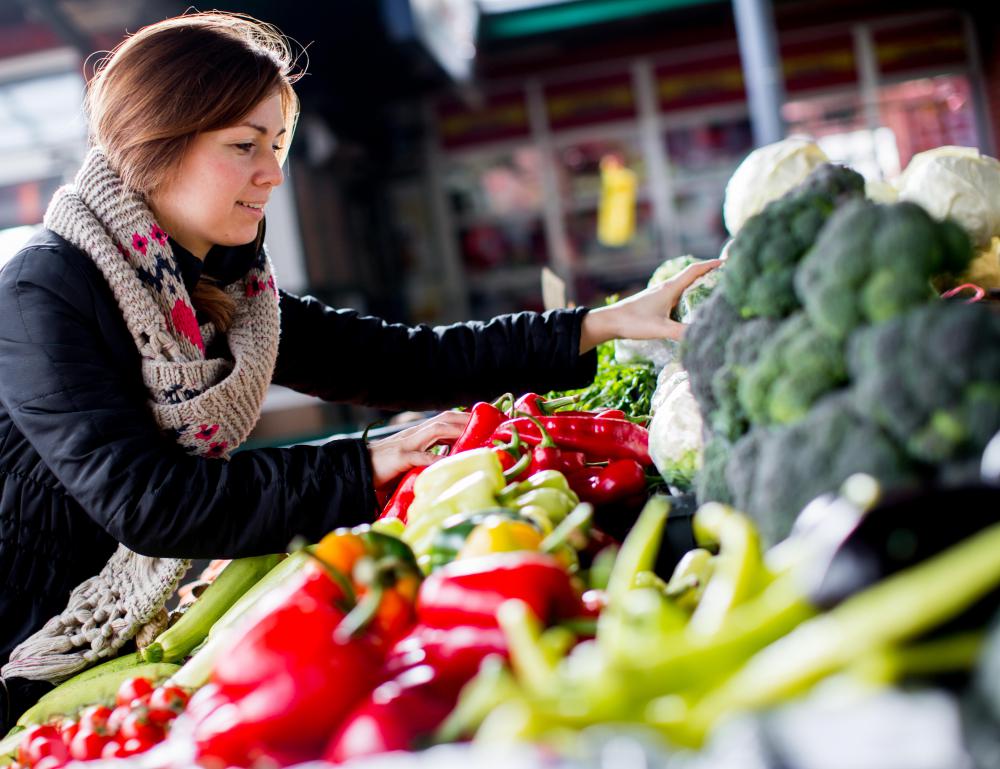At AllThingsNature, we're committed to delivering accurate, trustworthy information. Our expert-authored content is rigorously fact-checked and sourced from credible authorities. Discover how we uphold the highest standards in providing you with reliable knowledge.
What is a Brassicaceae?
Formerly known as cruciferae, brassicaceae is a family of plants most commonly referred to as the mustard or the cabbage family. A large and important family, brassicaceae contains many common vegetables, such as cabbage and broccoli, as well as ornamental plants, such as alyssum, and weeds, like bittercress. The mustard family consists of approximately 330 genera and 3,700 species.
Brassicaceae plants can usually be easily identified by their flowers. Species generally have clusters of flowers with four petals forming a cross shape. Flowers are usually white or yellow but can be red, blue, orange, or pink. Ornamental flowers, particularly, have a greater variety in their petal color. The cruciform arrangement of petals is what gave this family its original name, cruciferae.

Annual or perennial, brassicaceae plants usually have two chambered seed pods and alternating leaves climbing up their stems. These plants are found mostly in temperate regions in both the northern and the southern hemispheres. With a generally worldwide distribution, brassicaceae is found most diversely in the Mediterranean region. Many species also possess glycosinolate, which gives them the odor distinctive to broccoli or cabbage.

The most popular plants in this family can be found in the genus Brassica. These plants include cabbage, broccoli, cauliflower, turnips, and brussels sprouts. Commercial plants have been domesticated and specifically bred to produce plants with disproportional parts. The use of the plant usually determines which parts are disproportionately large. For example, cabbage has huge leaves, broccoli large flower buds, and turnips large roots.

Brassicaceae is called the mustard family because several species produce mustard. Brassica juncea is the species most commonly used to produce condiment quality mustard. Horseradish, another condiment, is a product of Armoracia lapathifolia, also in the family. Though not used to produce horseradish, radishes, Raphanus sativus, are also found in the mustard family.
Still other species are used in common foods. For example, Brassica napis, also called the rape plant, has several commercial uses. The leaves are used in salads, whole seeds are found in bird seed, and processed seeds are an ingredient in canola oil.
During the late twentieth century, an attempt to make scientific names more uniform required a change to the name of Cruciferae family. Under the new guidelines, family names needed to have the "-aceae" suffix and begin with the most common or important genus in the family. Thus, Cruciferae became Brassicaceae after the genus Brassica which includes many of the commercially produced vegetables.
Frequently Asked Questions
What is a Brassicaceae and why is it significant in the plant kingdom?
Brassicaceae, also known as the mustard family, is a significant group of plants due to its diversity and economic importance. It includes over 4,000 species, among them vegetables like cabbage, broccoli, and kale, as well as oilseed crops like canola. These plants are not only vital for human nutrition but also play a role in agriculture and ecology.
Can you list some common vegetables that belong to the Brassicaceae family?
Common vegetables in the Brassicaceae family include broccoli, cauliflower, Brussels sprouts, kale, turnips, and arugula. These vegetables are known for their health benefits, being rich in vitamins, minerals, and phytonutrients. They are widely cultivated and consumed around the world, forming a staple part of many diets.
What are the distinguishing characteristics of Brassicaceae plants?
Brassicaceae plants are characterized by their four-petaled flowers arranged in a cross shape, which is why they're sometimes called 'cruciferous' vegetables. They typically have alternate leaves and produce seed pods known as siliques or silicles. These botanical features are key identifiers for species within this family.
How do Brassicaceae plants benefit the ecosystem?
Brassicaceae plants benefit ecosystems by providing food and habitat for a variety of insects and animals. They also contribute to soil health through their root systems and the decomposition of plant matter. Some species, like mustards, can suppress soil-borne pests and diseases, making them useful in crop rotation and organic farming practices.
Are there any medicinal uses for Brassicaceae plants?
Yes, Brassicaceae plants have been used medicinally for centuries. They contain compounds like glucosinolates, which have been studied for their potential anti-cancer properties. According to research, the consumption of cruciferous vegetables may lower the risk of certain cancers, thanks to these bioactive compounds.
What role do Brassicaceae plants play in agriculture?
Brassicaceae plants play a multifaceted role in agriculture. They are widely cultivated for food, with crops like cabbage and broccoli being globally important. Additionally, oilseed crops like canola provide cooking oil and biofuels. These plants are also used in green manure and cover cropping strategies to enhance soil fertility and manage weeds and pests in sustainable farming systems.
AS FEATURED ON:
AS FEATURED ON:













Discuss this Article
Post your comments